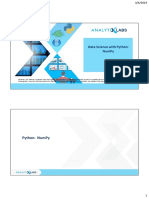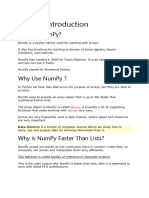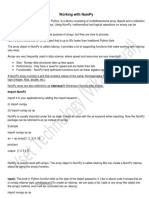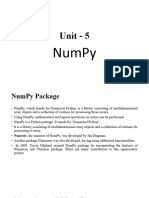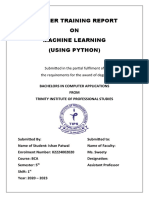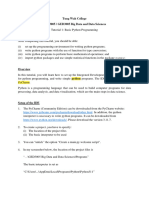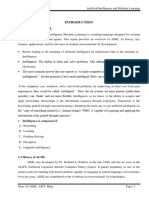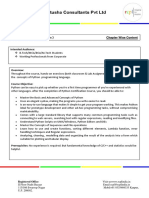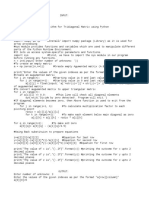0% found this document useful (0 votes)
34 views29 pagesAI Numpy
NumPy is a fundamental library for Python that provides efficient multi-dimensional array objects and mathematical functions for numerical computing, making it essential for data analysis, machine learning, and scientific computing. It is faster than traditional Python lists due to its contiguous memory storage and optimized operations, and it offers features like broadcasting, vectorization, and support for linear algebra. NumPy is widely used in various applications including finance, image processing, and data visualization, and can be easily installed and utilized in Python environments.
Uploaded by
2111CS010612 - SINGAM REDDY SWATHICopyright
© © All Rights Reserved
We take content rights seriously. If you suspect this is your content, claim it here.
Available Formats
Download as PPTX, PDF, TXT or read online on Scribd
0% found this document useful (0 votes)
34 views29 pagesAI Numpy
NumPy is a fundamental library for Python that provides efficient multi-dimensional array objects and mathematical functions for numerical computing, making it essential for data analysis, machine learning, and scientific computing. It is faster than traditional Python lists due to its contiguous memory storage and optimized operations, and it offers features like broadcasting, vectorization, and support for linear algebra. NumPy is widely used in various applications including finance, image processing, and data visualization, and can be easily installed and utilized in Python environments.
Uploaded by
2111CS010612 - SINGAM REDDY SWATHICopyright
© © All Rights Reserved
We take content rights seriously. If you suspect this is your content, claim it here.
Available Formats
Download as PPTX, PDF, TXT or read online on Scribd
/ 29


























